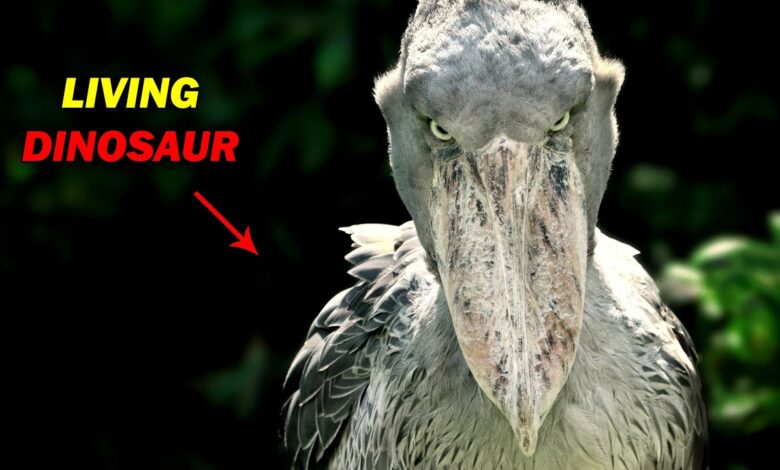Shoebill Stork Sound: Discover the Unique Calls of This Majestic Bird

Introduction to the Shoebill Stork
In the heart of Africa’s wetlands, one bird stands out for its striking appearance and intriguing behaviors: the Shoebill Stork. With a bill that resembles an ancient shoe and a gaze that seems to hold centuries of wisdom, this majestic creature is more than just a visual marvel. It captivates with its unique sounds—a series of calls that echo through the marshes like whispers from another time. If you’ve ever been curious about what makes these calls so special or how they contribute to the stork’s communication, you’re in for a treat. Step into the enchanting world of the shoebill stork sound and discover why every call tells a story worth hearing!
Physical Characteristics and Habitat of the Shoebill Stork
The Shoebill Stork is truly a sight to behold. Standing impressively tall, it can reach heights of up to five feet. Its striking appearance is dominated by an enormous beak shaped like a shoe—hence the name.
This bird boasts stunning gray plumage that provides excellent camouflage among the wetlands it inhabits. With long legs and broad wings, it’s perfectly adapted to its environment.
Found primarily in the swamps and marshes of East Africa, particularly in Uganda and Zambia, these storks thrive in areas rich with aquatic vegetation. They prefer slow-moving waters where they can hunt for their favorite prey: lungfish.
Their habitat not only offers shelter but also abundant food sources essential for their survival. The unique combination of physical features and ecological niche makes the Shoebill Stork one of nature’s most fascinating birds.
The Importance of Sound in Bird Communication
Sound plays a vital role in the lives of birds. It serves as their primary means of communication, allowing them to express emotions and establish territory.
Bird calls can signal danger or attract mates. Different pitches and tones convey various messages, creating a complex language that we are only beginning to understand.
For species like the Shoebill Stork, sound is essential for social interactions within their habitat. Their unique calls help maintain bonds between partners during breeding seasons.
Beyond communication, sounds shape bird behavior and influence feeding patterns too. The ability to recognize specific calls can be crucial for survival in the wild.
Listening closely reveals an intricate world where each call holds significance—an invitation, warning, or even a simple greeting among feathered companions.
The Unique Calls and Sounds of the Shoebill Stork
The Shoebill Stork is famous for its captivating calls. These sounds are unlike any other bird, resonating with a deep, almost prehistoric quality.
When they vocalize, you’ll hear a series of rhythmic clattering noises that echo through their swampy habitats. This unique sound can be described as a mix between a cough and the clang of metal. It’s both startling and mesmerizing.
These calls serve critical purposes in communication, especially during mating rituals or when establishing territory. The male’s booming voice often reverberates across vast distances to attract potential mates.
Parents also use distinct sounds to communicate with their chicks, ensuring safety and signaling feeding times. Each call has its own significance within the social structure of these magnificent birds.
Listening to the Shoebill Stork is like stepping into another world—one filled with ancient echoes from nature’s symphony.
How Scientists Study the Sound of Shoebill Storks
Scientists employ a variety of methods to study the sounds made by shoebill storks. They often use advanced audio recording equipment to capture the unique calls in their natural habitat. This technology allows researchers to analyze vocalizations in detail.
Field observations also play a crucial role. Experts spend hours watching these majestic birds, noting when and why they call. Understanding context is key; whether it’s during mating rituals or establishing territory, each sound serves a purpose.
Some studies involve playback experiments. By playing back recorded calls, scientists can assess how other shoebills react. This helps decipher social dynamics and communication patterns within groups.
Additionally, collaboration with local communities enhances research efforts. Local guides provide valuable insights into bird behavior that might not be apparent through scientific observation alone.
Interesting Facts about Shoebill Stork Calls
Shoebill storks are known for their remarkable vocalizations, which serve various purposes in their daily lives. One fascinating aspect of their calls is that they can produce sounds resembling a deep, resonant “whoop.” This distinctive noise can echo across the wetlands where they reside.
Another intriguing fact is that these birds often communicate through more than just vocal sounds. They also use body language to convey messages to one another, complementing their unique calls.
During breeding season, males may engage in rhythmic clattering with their bills, creating an almost musical pattern. This display not only attracts potential mates but also establishes territory among rival suitors.
Interestingly, juvenile shoebills tend to have softer and less defined calls compared to adults. As they mature and learn from their parents, their vocalizations become richer and more varied—a true testament to the evolution of communication within this species.
Conservation Efforts for Shoebill Storks and Their Sounds
Conservation efforts for the Shoebill Stork are crucial to preserving its unique calls and overall existence. These incredible birds face numerous threats, including habitat destruction and poaching. Protecting their swampy habitats in East Africa is essential for these majestic creatures.
Organizations worldwide are working tirelessly to create protected areas where Shoebills can thrive without human interference. By raising awareness about the importance of wetlands, conservationists aim to safeguard not just the storks but also the diverse ecosystems they inhabit.
Research initiatives focus on understanding their behavior, including vocalizations. This knowledge helps inform effective conservation strategies that prioritize soundscapes critical to their communication and mating rituals.
Community involvement plays a key role too. Local populations are educated on sustainable practices that benefit both them and the Shoebills around them. Engaging communities fosters a sense of stewardship toward these remarkable birds and their enchanting sounds.
Conclusion: Appreciating the Fascinating World of
The Shoebill Stork captivates bird enthusiasts and nature lovers alike with its striking appearance and unique vocalizations. These majestic birds are not just a feast for the eyes; their sounds add an intriguing layer to their behavior and communication.
By exploring the Sonic Universe of the Shoebill, we gain insight into how they interact within their environments. The calls of these storks serve various purposes—from attracting mates to marking territory. Understanding these nuances allows us to appreciate them beyond mere aesthetics.
As conservation efforts continue, it’s vital to recognize the importance of preserving both the birds and their natural habitats. By protecting shoebills, we ensure that future generations can experience their enchanting sounds in person.
Embracing the uniqueness of shoebill stork sound enhances our appreciation for wildlife as a whole. It reminds us that every creature has its role in maintaining ecological balance. As we learn more about this magnificent bird, let’s remain committed to safeguarding its existence—sound by sound.

